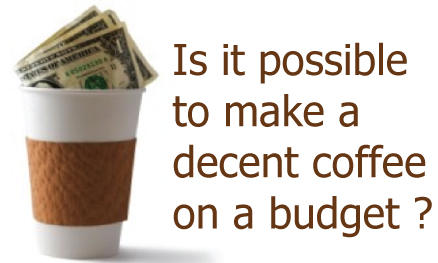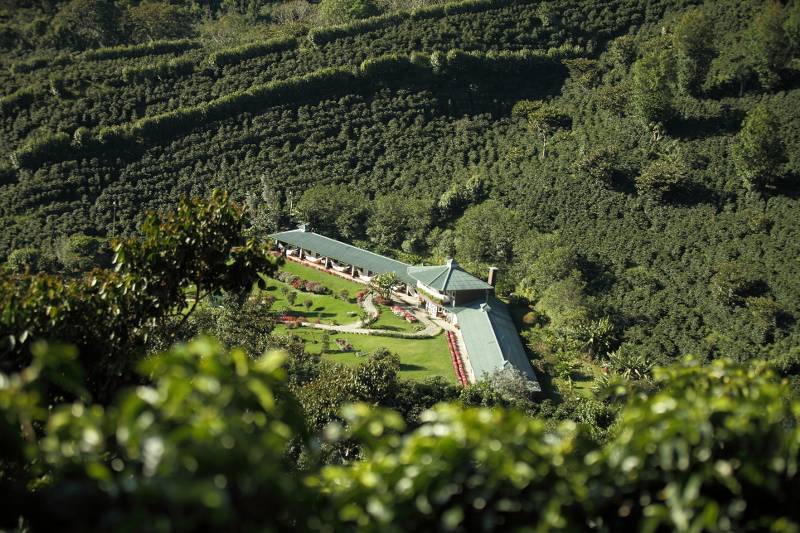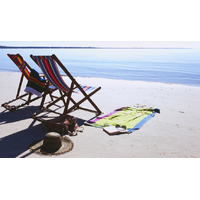May 2016 - Coffee on a budget, Panama
Date Posted:1 May 2016
“Everyone thinks of changing the world, but no one thinks of changing himself.” — Leo Tolstoy
Well, it's time for a makeover...........so both our web store and newsletter have been subjected to more than just a little nip & tuck.
The new mycuppa.com.au went live on the 22nd April - a big project for our team over the last 4 months, rebuilding from scratch. The new system provides additional features assisting our operational processes, improving accuracy and more importantly our speed across the stages from order to warehouse to freight providers - we can literally take an order, pick, pack and dispatch within 5 mins - a velocity that even Amazon can't match.
Customers can now view the freight consignment tracking ID for each order within your customer profile - a long-overdue feature. The new system uses a customized version of Australian developed software, hosted and supported by Australian-based companies.

I'm often asked .........."I don't want to spend much money, but I want a really good coffee experience at home ?".....or......."I'm sick of being disappointed by pods/capsules and they are so expensive when i need 2 to 5 a day......"
The challenge with preparing quality espresso coffee at home is the real potential to spend thousands in creating a true cafe experience. Or, you start with entry-level/basic equipment and before long a severe case of upgraditis strikes .......spending each day dreaming of that $3,500 Italian espresso machine or a massive $2,000 conical grinder.
For a lot of our mycuppa customers, this sort of expense is nothing at all because they can easily justify the return on investment by saving up to $2 or $3 per cup by making their own at home, or they accept and realize that an appreciation of coffee is in fact a serious hobby and therefore worth investing a bit more to enjoy the experience - an investment that keeps on rewarding for many years.
But for others, outlaying a at least $600 for a basic machine and another $300 for a simple grinder can be confronting.
So, what can you do to make a decent coffee without spending a fortune ?
I recommend to people seeking home coffee on a budget to consider the humble stovetop (moka pot) or an Aeropress, or even a plunger.
These devices can be purchased for around $50+ and when used properly they can produce wonderful brewed coffee. The only downside is that you can't easily create that silky textured milk effect so many of us are addicted to in our cafe style coffees.
For stovetop (or Moka pot) always look for stainless units with a copper base - just like your saucepans - don't buy aluminum equipment. Stovetops work best where an instant heat source is available, e.g. gas or induction.
Aeropress uses a principle similar to plunger and when you have the dosage, grind and hot water temperature right, it's truly magnificent. Aeropress have a cult following - especially as a portable coffee maker for those who are traveling. Aeropress has a wider range of variables, so it may take a few experiments to achieve a brew you like and you can try lighter, fruitier coffees from Africa to produce refreshing zesty brews.
Of course, the secret here on all types of coffee brewing is to use whole beans that are freshly ground just prior to brewing, e.g. not using pre-ground coffee from a pack. Most people are mortified to learn that even fresh ground and sealed coffee will still oxydize inside of the sealed packaging at rate of 30+ times faster than whole beans. The reality is that pre-ground coffee in sealed bags will stale within a couple of weeks. Opened packs of ground coffee can stale in 15 minutes. To make these solutions work at an optimal level, some type of grinder will be needed to convert the whole beans into the right ground coffee size. Now this is where it becomes difficult and most people end up abandoning the idea - grinders appear expensive, messy and take up valuable space on the kitchen bench.
If you enjoy coffee, the money spent on a decent grinder is the best investment in kitchen appliances you will ever make - quality grinders last a long time.
Cheap grinders are simply rubbish - people try to use spice grinders, or the lowest cost grinder they can find and wonder why their coffee is mostly shocking - sometimes even blaming the beans or the roaster !.
The particle size of ground coffee needs to be accurate and consistent to match the brew method/style. Cheap grinders bash and smash the beans to produce particles that are both too fine and too coarse. When you brew these inconsistent ground coffee particles you end up with under and over extracted coffee - it's barely OK, not enjoyable.
Hand grinders have become more quality focused over the last few years. They are cheaper, quieter and some of the best designs retain less ground coffee compared to similarly priced electric grinders, therefore less coffee wastage from purging. But again, I stress this point - buy a proper, quality coffee grinder - spice grinders are not suitable for coffee !

May featured coffee - Panama
Over the last 2 years, just about everyone in the coffee industry has been fascinated with Panama. Their coffees have always been sublime, but it's been the rare and exotic Geisha coffees that have captivated the world's attention. Panama Geisha's have been dominating many of the competitions around the world - barista, roasting, cup tasting, and the very best lots are scoring pretty close to 100 points in blind cup assessments.
The challenge of course is that these highly prized Panama Geisha coffees are like $100 per kilo (or more) and in limited or exclusive supply - in reality this is outside the realms of most coffee drinkers, so it's rather a distorted side of the market - much like caviar in fine dining restaurants.
Some Coffee Companies buy a small amount and then market the bejesus out of it trying to artificially enhance their profile or reputation. It's become a novelty, just like in the past when everyone thought Jamaica Blue Mountain was the top of the temple and let's not forget the perverse creation that was the dishonest marketing of Kopi Lewak. Of course, over time these fads will soon pass.
But what about the other coffees of Panama - why are they so damn good ?
Panama, like Costa Rica is losing some of it's traditional farming land to property developers and therefore the industry is shrinking in relative terms. The days of mass producing coffee volumes are long gone, so farmers are now taking a lot more care to produce quality as they have to ensure it can be soldfor higher prices that enable adequate support of their farming enterprise, else they would be better off selling the land to developers or growing an alternative higher value crop.
We have always admired Panama coffees - they are smooth, rich and rewarding in a way that reminds you of the very first time as a child you remembered tasting chocolate or sweets - absolute yum.
Superb caramel and toffee abound in washed Panama coffees - they are sweet, balanced with delightful acid that works beautifully well with milk-based espresso.
Back in 2008 - 2010, I would often use plenty of Panama Boquette in my blends because they were just so much better in the cup, more consistent and reliable than just about any other coffee growing origin - always well prepared. However, these days with the high cost of Panama, Costa Rica, Sumatra, Kenya and many Ethiopian coffees, the use of prized coffee in blends is diminishing - instead they represent opportunities to feature as premium single origin coffees.
We have just 300kg of this fresh, superb micro lot Panama that will be offered for a short time via our Panama product in our store.
The Estate has featured many times in the Best of Panama competitions over the last 6 years and this lot is a Caturra varietal grown at 1600 masl in an ideal microclimate of black volcanic soil. It's this soil that makes all the difference.
Flavours of poached apple with elegant caramel and a delightful length.
Grab it here - PANAMA

During May we will commence a trial of Fastway couriers to select residential locations along the Eastern seaboard of Australia.
As far back as 5 years ago we had used Fastway for some time to deliver our Business customer freight, as residential consignments had always proved challenging back then for all courier services.
We believe the service has improved considerably and may provide comparable transit performance to Express at a price that is competitive to standard freight.
Getting your orders to you as fast as possible remains our priority.
An important point to note is that cut-off times for Fastway collection will be earlier at 3pm each weekday whilst AusPost remains a 4pm cut-off each weekday.



